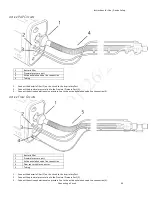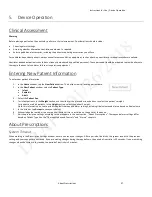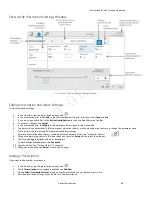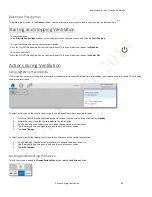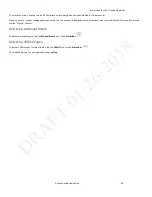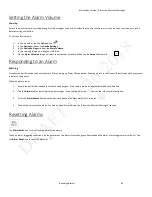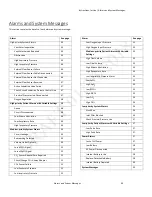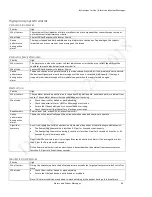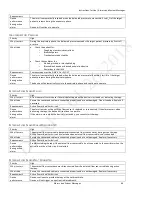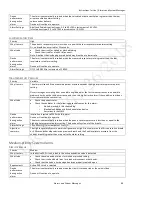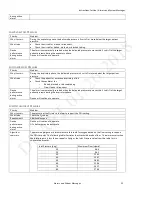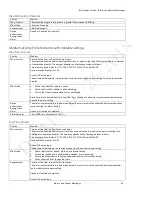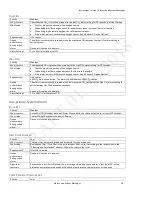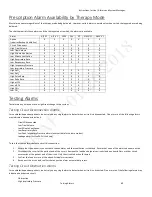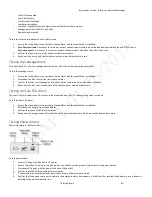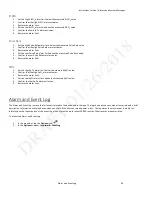
Instructions for Use | Alarms and System Messages
Alarms and System Messages
48
•
Ensure that the oxygen source is appropriate.
•
Contact Philips Respironics Customer Service
Requirements
Oxygen source
Device
performance
during active
alarm
Device will continue to operate.
Algorithm
summary
The controller cannot regulate flow to guarantee FiO
2
accuracy within 10% ± 3% of the FiO
2
setting.
High-priority Patient Alarms with Variable Settings
A
PNEA
Priority
High
Why it occurs
Time between patient-initiated breaths is greater than the Apnea Interval setting.
What to do
•
Ensure the circuit is properly connected to the patient.
•
Check the circuit for a leak or disconnect.
•
Check the circuit for kinked or pinched tubing..
Device
performance
during active
alarm
The alarm is automatically resolved when two patient breaths are detected that occur within set
interval.
Device will continue to operate.
Alarm Settings
5 to 60 seconds in increments of 5 seconds
Available when Backup Ventilation is enabled
C
IRCUIT
D
ISCONNECTED
Warning
: You should not rely on any single alarm to detect a circuit disconnect condition. The Low Tidal Volume, Low Minute Ventilation, Low
Respiratory Rate, and Apnea alarms should be used in conjunction with the Circuit Disconnected alarm.
Priority
High
Why it occurs
The patient is not properly connected to the ventilator breathing circuit or there is a large leak.
What to do
Ensure the circuit is properly connected to both the patient and the ventilator and that a large
unintentional leak does not exist.
Device
performance
during active
alarm
The alarm is automatically resolved when the circuit is reconnected or the excessive leak is fixed.
Device will continue to operate.
Alarm Settings
Off, 5 to 60 seconds in increments of 5 seconds.
Algorithm
summary
The alarm occurs when either of the following conditions are met:
•
The flow out of the device is excessive for a time greater than the alarm setting.
•
The ventilator examines all expiratory flow for a minimum of three breaths or amount of time
greater than the alarm setting and determines that the circuit is disconnected or obstructed.
L
OW
M
INUTE
V
ENTILATION
Priority
High
Why it occurs
The patient’s minute ventilation is less than or equal to the Low Minute Ventilation alarm setting.
Or, no breath has occurred for 15 seconds.
What to do
•
Check the circuit for kinked or pinched tubing.
•
Check the circuit for a leak or disconnect.
•
Remove excessive water from the tubing.
•
Ensure the bacteria filter is not blocked, occluded, or disconnected.
•
Ensure the leak device is not blocked, occluded, or disconnected.
Note: A patient that is sleeping or medicated may breathe at a lower rate or with lower tidal volumes.
These conditions may contribute to lower minute ventilation.

